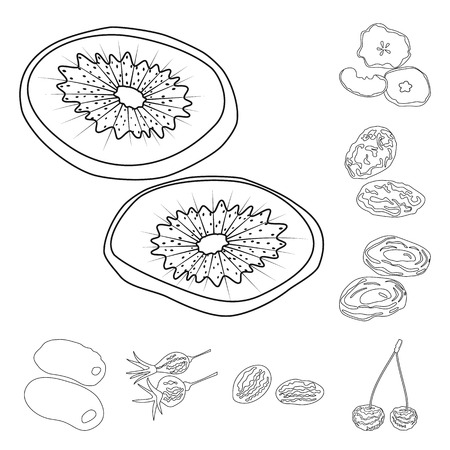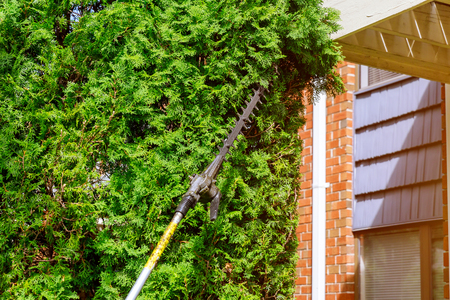Introduction to Common British Garden Pests
Gardening in the UK is a cherished pastime, yet it comes with its unique set of challenges, particularly when it comes to managing local pests. British gardens are home to a variety of indigenous species that can impact both ornamental and edible plants. Among the most frequently encountered pests are slugs and snails, which thrive in the UKs damp climate and are notorious for damaging young shoots and leaves overnight. Aphids, often found clustering on new growth, can quickly sap the vitality from roses, beans, and brassicas by feeding on plant sap and transmitting viruses. Vine weevils, with their larvae attacking roots underground, pose a silent but serious threat to container-grown plants and ornamentals such as heucheras. Leatherjackets, the larvae of crane flies, are another common culprit responsible for patches of dying grass in lawns. These pests are part of the local ecosystem but can become problematic when their populations grow unchecked, leading to significant damage and potential loss of valuable flora. Recognising these species and understanding their impact on native plants is essential for any British gardener aiming to maintain a healthy and thriving garden environment.
2. Recognising Early Signs of Pest Infestation
For British gardeners, the ability to identify both subtle and obvious signs of pest infestation is crucial in maintaining a healthy garden and determining when professional help might be necessary. Pests common in UK gardens—such as aphids, slugs, vine weevils, and red spider mites—tend to leave specific traces. It’s important to regularly inspect your plants and soil for these indicators.
Subtle Indicators of Pest Presence
Early detection often hinges on noticing minor changes before severe damage occurs. Look out for:
- Distorted or curled leaves
- Yellowing or speckled foliage without apparent cause
- Tiny bite marks along leaf edges
- A sticky residue (honeydew) on leaves or beneath plants
- Unusual leaf drop outside of normal seasonal patterns
Overt Signs of Damage
More advanced infestations are easier to spot but may signal an urgent need for intervention. Watch for:
- Large holes in leaves or flowers
- Visible pests such as caterpillars, beetles, or clusters of aphids
- Silky webs across stems (often from red spider mites)
- Damaged roots, especially when repotting or moving plants
Pest Damage Reference Table: Common British Garden Pests
| Pest Type | Typical Early Sign | Overt Damage Noted |
|---|---|---|
| Aphids | Curling leaves, sticky residue | Stunted growth, heavy infestation visible |
| Slugs & Snails | Tiny slime trails, small holes at night | Larger irregular holes, decimated seedlings |
| Vine Weevils | Notched leaf edges at night | Wilting plants due to root damage |
| Red Spider Mites | Pale mottling on leaves, fine webbing | Browning foliage, leaf drop |
Routine Observations: A Preventative Approach
The key is regular monitoring—weekly walkabouts with a careful eye can save much heartache later. Take note of any changes in plant health and compare with typical seasonal variations. If you are unsure whether the symptoms you observe are due to pests or environmental factors, seeking advice from a local horticulturist or garden centre can provide valuable clarity. Early recognition and prompt action remain the most effective methods to prevent minor issues from becoming major infestations requiring professional intervention.

3. DIY Pest Control: When and How It’s Effective
Many British gardeners prefer to tackle pests themselves before seeking professional help, relying on a mixture of traditional wisdom and modern innovations.
Traditional Methods in the UK
Classic home remedies such as beer traps for slugs, companion planting, and encouraging natural predators like ladybirds remain popular across British gardens. These methods are often lauded for their low cost and eco-friendliness, aligning well with the environmentally conscious mindset prevalent in the UK. Additionally, manual removal—such as hand-picking caterpillars or using copper tape around vegetable beds—is still widely practised.
Modern Approaches and Products
The British market offers an array of over-the-counter pesticides and organic solutions, including neem oil sprays, biological controls like nematodes, and pheromone traps. Many gardeners also use physical barriers such as netting or fleece to protect crops from birds and insects. Garden centres provide advice tailored to local conditions, helping residents navigate which products are both effective and permitted under UK regulations.
Limitations of DIY Methods
While these techniques can be very effective for minor infestations or isolated issues, they do have limitations. Weather conditions in the UK—frequent rain and variable temperatures—can quickly diminish the efficacy of certain treatments, especially contact sprays or powders. Moreover, some pests, such as vine weevils or persistent aphid colonies, may resist amateur interventions and require more robust strategies.
Recognising When DIY Isn’t Enough
If repeated efforts fail to reduce pest numbers or damage continues to escalate despite your best endeavours, it may be time to consider professional intervention. Persistent infestations can overwhelm even the most diligent gardener, especially when dealing with protected species or regulated pesticide use under UK law. Recognising the boundaries of home-based control is crucial for protecting both your garden and local biodiversity.
4. Red Flags Indicating Need for Professional Help
While a hands-on approach can address many minor pest issues in the garden, certain warning signs should prompt British gardeners to seek professional intervention. Understanding when the situation has escalated beyond manageable levels is crucial for protecting both your plants and the wider ecosystem. Below, we provide detailed descriptions of scenarios and red flags that suggest it’s time to call in an expert.
Uncontrolled Pest Populations
If you notice that pests, such as aphids, slugs, or vine weevils, are multiplying despite repeated use of home remedies—like soap sprays, beer traps, or manual removal—this is a clear sign that the infestation may be out of hand. A rapidly growing pest population often points to an underlying issue that requires professional-grade treatments not available to the general public.
Widespread Plant Damage
Pest damage that spreads across multiple beds or affects a variety of plant species is another serious indicator. If you observe widespread wilting, leaf loss, discolouration, or stunted growth, especially after trying standard interventions, this suggests pests have established a stronghold. At this stage, a professional assessment is necessary to prevent lasting harm to your garden’s biodiversity.
Recurring Infestations
Persistent infestations that reappear season after season—despite rotating crops or using barriers and deterrents—can indicate deeper problems such as soil-borne pests or hidden nests. These scenarios typically require advanced diagnostic tools and targeted treatments offered by pest control specialists.
Table: When to Call a Professional vs. Manage at Home
| Warning Sign | DIY Suitable? | Professional Needed? |
|---|---|---|
| Minor localised pest presence | Yes | No |
| Pests resistant to home remedies | No | Yes |
| Damage across multiple plant species | No | Yes |
| Recurrence every season despite prevention efforts | No | Yes |
| Pest identification uncertain (e.g., signs of invasive species) | No | Yes |
| Pests posing health risks (wasps, rats) | No | Yes |
Conclusion: Recognising the Limits of Home Remedies
A keen eye for these red flags ensures timely intervention and protects both your garden and surrounding wildlife. Don’t hesitate to seek professional help when DIY methods fail—especially with persistent or large-scale infestations common in the UK’s varied climate. Engaging a qualified expert can make all the difference between a thriving garden and one overwhelmed by pests.
5. Selecting a Qualified British Pest Control Service
When it becomes clear that garden pests require more than a DIY solution, engaging a reputable pest control service is crucial. In the UK, selecting the right professional involves more than a quick search; it demands due diligence to ensure both effective and responsible pest management. First, confirm that any pest control company you consider holds accreditation from recognised bodies such as the British Pest Control Association (BPCA) or the National Pest Technicians Association (NPTA). These organisations set industry standards and require members to adhere to rigorous codes of practice.
Additionally, ask about technician certifications. All professionals should possess up-to-date qualifications such as the RSPH Level 2 Award in Pest Management. This not only demonstrates technical competence but also an understanding of UK-specific regulations regarding pesticide use and environmental safety.
It is wise to check whether the company carries public liability insurance to protect you and your property should anything go awry during treatment. Local councils may keep lists of approved providers—consulting these can help ensure compliance with regional requirements and best practices.
Finally, request a written assessment and quotation before work begins, ensuring transparency about the methods proposed and their likely effectiveness. Reputable firms will be happy to explain their approach, outline aftercare provisions, and provide references upon request. By thoroughly vetting potential service providers, you can safeguard your garden while maintaining high standards of safety, legality, and environmental care.
6. Long-term Prevention Strategies for UK Gardens
When it comes to keeping garden pests at bay, especially in the variable British climate, adopting sustainable and practical prevention strategies is essential. Rather than relying solely on reactive solutions, a proactive approach can help maintain a healthy garden ecosystem while reducing the likelihood of severe infestations that may require professional intervention.
Encouraging Biodiversity
One of the most effective long-term defences against pests is fostering biodiversity within your garden. By planting a diverse array of native flowers, shrubs, and trees, you attract beneficial insects such as ladybirds, lacewings, and hoverflies—natural predators of common UK garden pests like aphids and caterpillars. Installing wildlife-friendly features such as bug hotels or small ponds can also support birds, frogs, and hedgehogs, further strengthening your garden’s natural pest control mechanisms.
Soil Health and Crop Rotation
Healthy soil forms the foundation of pest-resistant gardens. Regularly enriching your soil with well-rotted compost improves its structure and encourages robust plant growth, making plants less susceptible to pest attacks. For vegetable plots, practice crop rotation each year to prevent the build-up of soil-borne pests and diseases—a time-honoured method among British allotment holders.
Cultural Controls and Good Husbandry
Simple cultural practices can make a significant difference. Remove dead leaves and plant debris promptly to deny shelter to overwintering pests. Where possible, space plants appropriately to ensure good airflow, reducing humidity levels that can encourage pests like slugs and fungal diseases. Using physical barriers—such as copper tape for slugs or fine netting over brassicas—provides an extra layer of protection without resorting to chemicals.
Integrated Pest Management (IPM) in the UK Context
Adopting an Integrated Pest Management (IPM) approach means combining several methods for sustainable results. Monitor your garden regularly for early signs of trouble using traps or visual checks. Only use chemical treatments as a last resort, selecting options approved for UK gardens and applying them precisely to minimise their impact on beneficial wildlife.
Community Knowledge Sharing
Don’t underestimate the value of local knowledge—join gardening clubs or online forums specific to your region to exchange tips on pest trends and effective prevention strategies suited to British weather patterns. This collaborative spirit not only helps in tackling current issues but also builds resilience against future outbreaks.
By embedding these prevention strategies into your gardening routine, you create a more resilient outdoor space less likely to need professional intervention. Ultimately, the goal is a thriving garden where nature’s balance keeps pest populations under control in harmony with the unique challenges and joys of British gardening.


